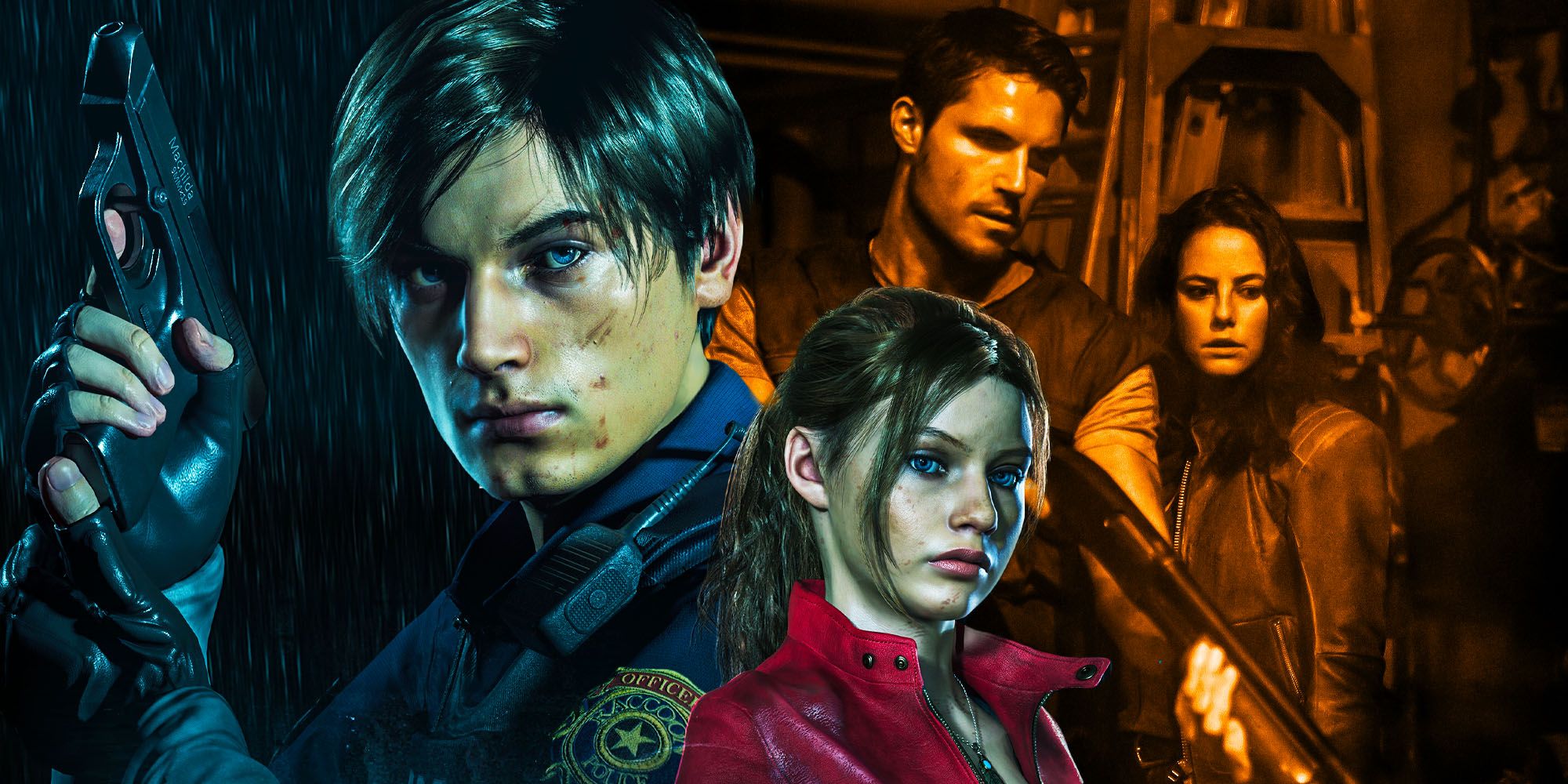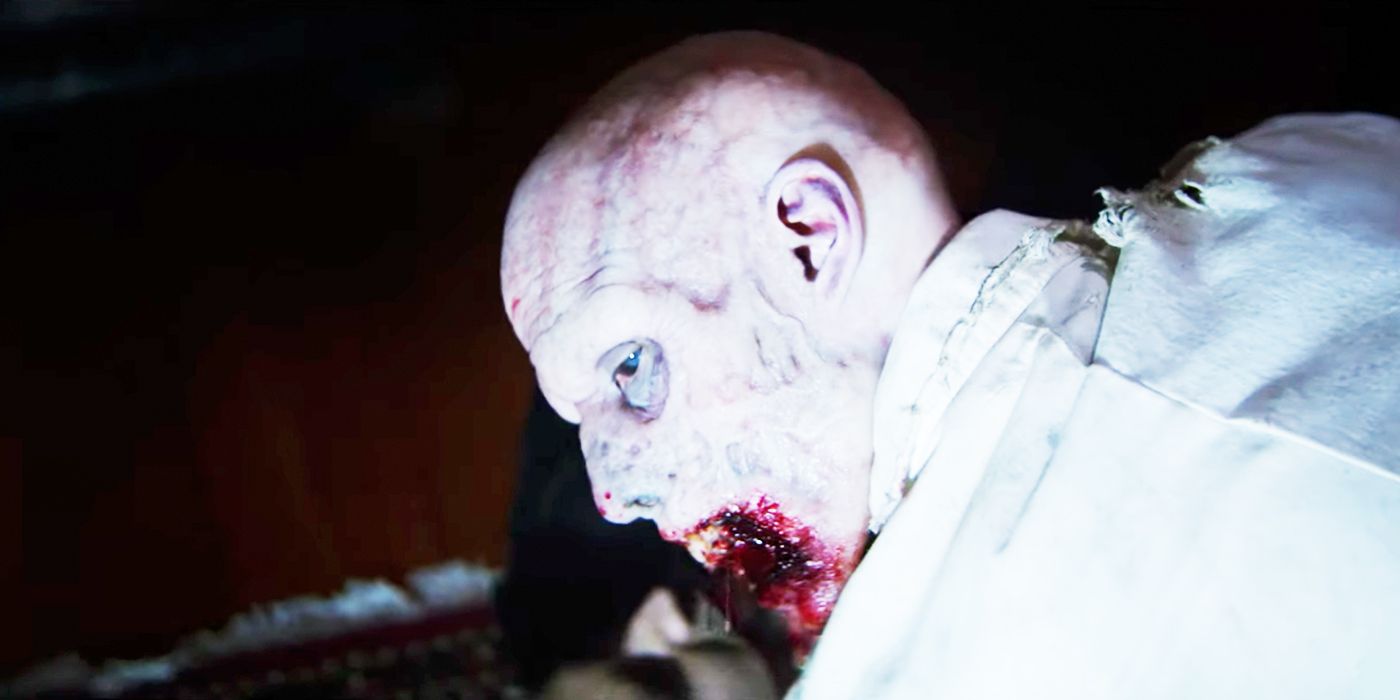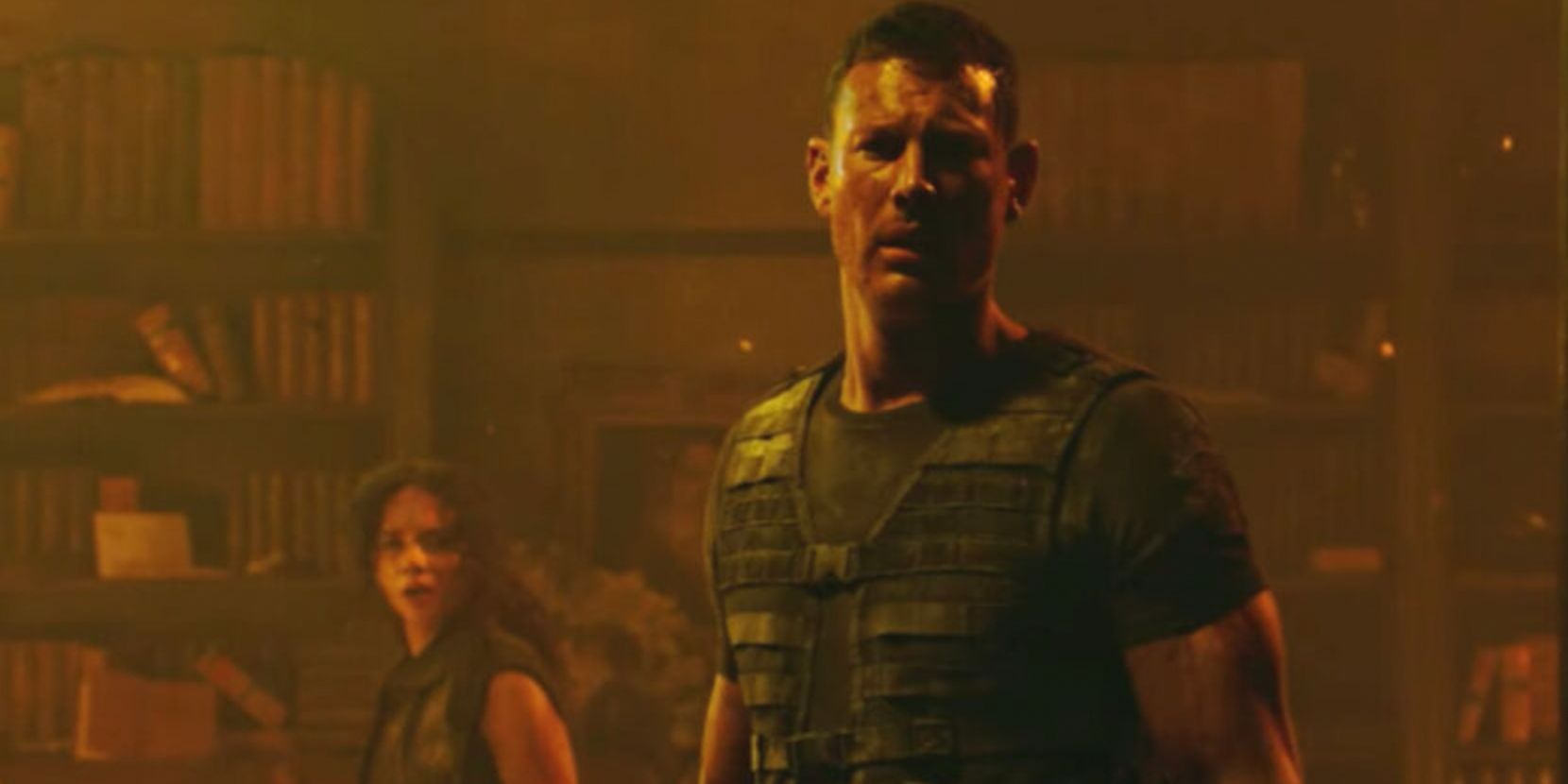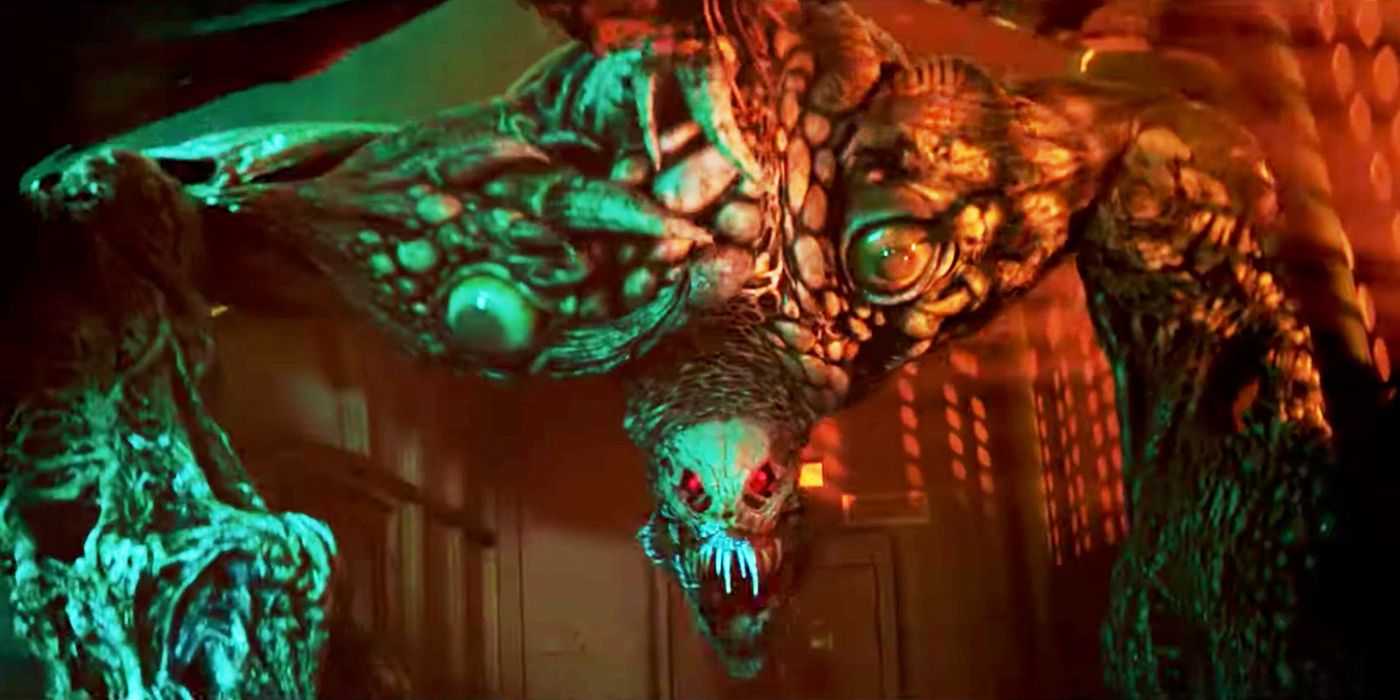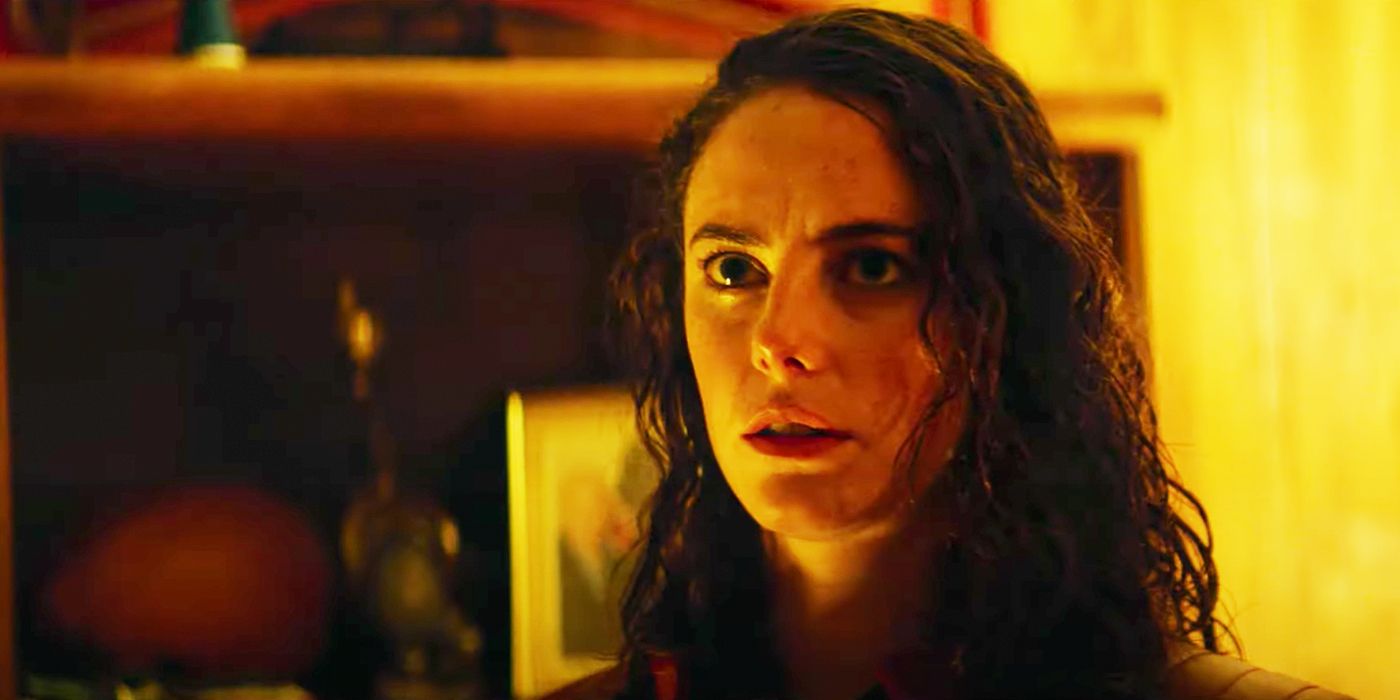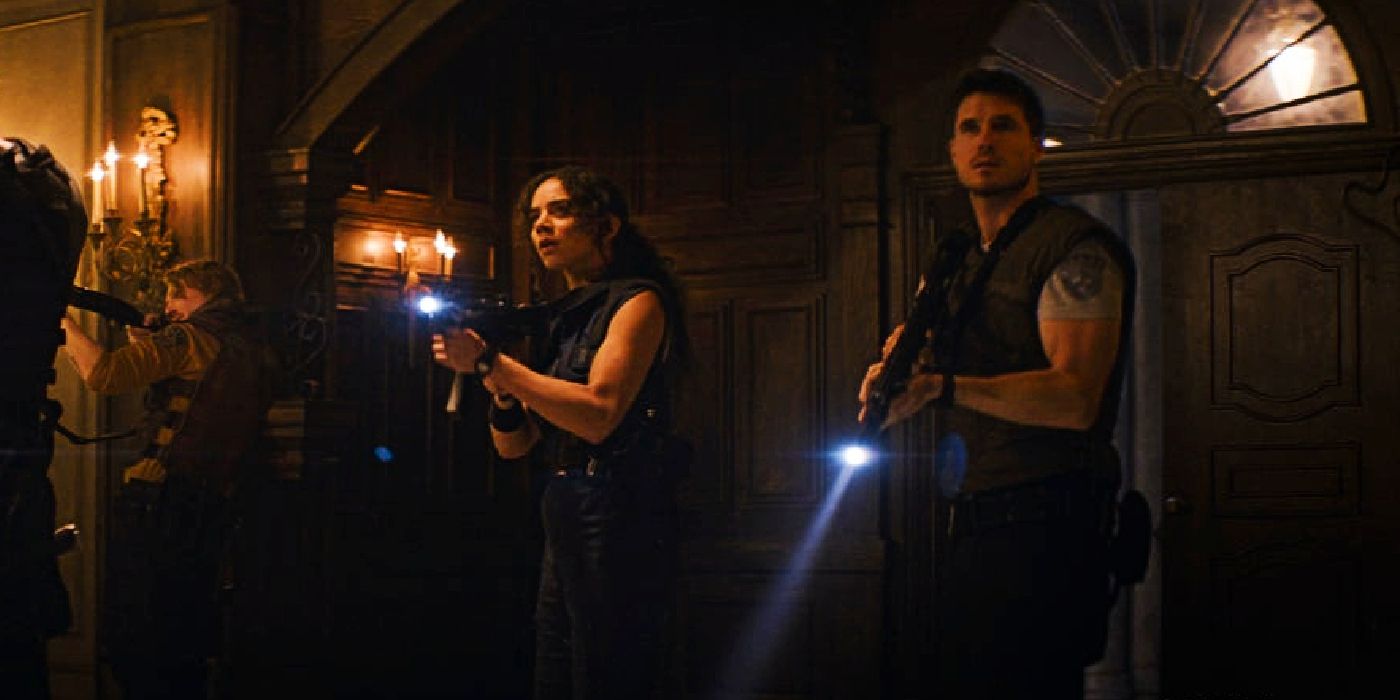Warning: Contains SPOILERS for Resident Evil: Welcome To Raccoon City.
Although a largely faithful homage to the original games, there are still some big differences between Resident Evil: Welcome To Raccoon City and its source material. Resident Evil: Welcome To Raccoon City has been described as a love letter to long-time fans of the videogame series, containing a plethora of Easter eggs and references for audiences to explore. Yet despite its clear intent to reboot the Resident Evil movie franchise to better align with the videogame storylines, many differences between Johannes Roberts' live-action film and the games remain.
Resident Evil: Welcome To Raccoon City closely follows the first Resident Evil video game's story to re-tell the T-Virus's inception some 19 years after Paul W. S. Anderson's Resident Evil 2002. As in the Sony Playstation Resident Evil release in 1996, Resident Evil: Welcome To Raccoon City centers on the eponymous Raccoon City, and, in particular, its two buildings, the Raccoon City orphanage and the Spencer Mansion. Resident Evil: Welcome To Raccoon City sees classic franchise characters Claire (Kaya Scodelario) and Chris Redfield (Robbie Amell) fighting for survival while searching for answers alongside fellow STARS members Jill Valentine (Hannah John-Kamen), Leon Kennedy (Avan Jogia), and Albert Wesker (The Umbrella Academy's Tom Hopper).
While Resident Evil: Welcome To Raccoon City is largely a play-by-play retelling of Resident Evil 1's story, understandable contrasts remain between the live-action movie and the shoot-em-up viscera of the original games. From creative liberties with the movie's condensed time frame to big changes to Wesker's character motivations, Roberts' changes are mostly in the name of expediency to advance the film's plot. Here are the biggest differences from the Resident Evil games in Resident Evil: Welcome To Raccoon City.
Resident Evil: Welcome To Raccoon City's Timeline
There are several pointers throughout Resident Evil: Welcome To Raccoon City that suggest director Johannes Roberts has decided to partially merge the events from the first two videogame series installments. Prominent Resident Evil 2 components can be seen in Welcome To Raccoon City, with Leon's police vest (an unlockable in-game item) and the introduction of The Licker just two examples here. The first Resident Evil game canonically occurs between July 24-25, 1998, while Resident Evil 2 takes place during September 29-30, 1998.
Resident Evil: Welcome To Raccoon City, however, takes place on September 30, 1998, which mashes the first three game's timelines together for the sake of expediency. In Resident Evil 1, the infected are essentially given a two-month grace period to seep into Raccoon City from the Spencer Mansion, whereas Resident Evil: Welcome To Raccoon City scarily suggests it is the city's infected water supply that has instead instantaneously turned the whole population into flesh-eating monsters. This focus on contaminated water is far more akin to Resident Evil 2 and 3, where the games explain infected shower water (due to an incident at the water treatment plant) as the reason for the spread of the T-Virus, although Welcome To Raccoon City has still muddled the original games' narrative to arrive at its action scenes more quickly.
Albert Wesker's Motivations
One of the biggest twists in Resident Evil 1 is Albert Wesker's defection as he leaves his STARS comrades for dead. However, his reasons for doing so contrast greatly between the Resident Evil 1 videogame and Resident Evil: Welcome To Raccoon City. Wesker is revealed to be one of Umbrella's prominent employees in the games, with Albert himself responsible for creating STARS as a failsafe against his company's nefarious experiments within the Spencer Mansion. The in-game version of Wesker is also a savage combatant, reveling in killing zombies and showing no remorse when he turns on the play and their team near the end of Resident Evil 1.
In contrast, Tom Hopper's Wesker in Resident Evil: Welcome To Raccoon City is severely dumbed-down to make his motivations seem plausible. Welcome To Raccoon City's Wesker is essentially a run-of-the-mill spy tasked with recovering Umbrella secrets, although his employer is never revealed, perhaps with an eye on a Welcome To Raccoon City sequel here. Hopper's Wesker is also decidedly squeamish, balking at killing animals (let alone zombies) in a far cry from his bloodthirsty videogame persona.
The State Of Raccoon City
Aligned with the chronology issues highlighted above, Resident Evil: Welcome To Raccoon City also hastens the destruction of civilization within its city's walls to immediately increase the narrative stakes at hand. In the first two Resident Evil games, Raccoon City is still a thriving urban conurbation, with its residents going about their daily business blissfully unaware of the infection spewing forth from the Spencer Mansion. In Resident Evil 2, for example, The Licker attacks the Raccoon City police station that Leon is in, resulting in a bloody battle between the city's police and the slithering creature.
However, in the Welcome To Raccoon City movie, the STARS squads and Claire (separately) arrive to find the titular city in ruins and overrun with undead. There is a sad social commentary within Welcome To Raccoon City's story here, with many city residents too poor to leave, resulting in their inevitable infection and death. Aside from painting a bleak portrait of an unbalanced economy in the Resident Evil canon, this change to the city was likely taken to speed Welcome To Raccoon City's plot forward and get the STARS teams into the iconic Spencer mansion quicker.
Chris & Claire's Relationship
In the original video games, Chris and Claire Redfield enjoy a healthy sibling relationship, with Claire originally traveling to Raccoon City to investigate Chris' disappearance following his telegraphed investigation of Umbrella. In Resident Evil: Welcome To Racoon City, however, the film depicts a lack of understanding between the pair, inventing a new backstory for the siblings in which Claire abandons Chris as a child at Raccoon Orphanage. While this decision certainly adds an extra element of spice to the pair's interactions in the film, it also dilutes Claire's motivations for charging headfirst into a zombie horde - making her character much less compelling in Resident Evil: Welcome To Raccoon City as a result.
Where Is Barry?
One of the most glaring differences between the Resident Evil games and Welcome To Raccoon City is the omission of Barry Burton, Jill Valentine's partner, and co-op player in the original video games. There is no mention of him whatsoever in Johannes Roberts' Resident Evil: Welcome To Raccoon City, with Jill performing much of her mansion "campaign" solo after becoming separated from the STARS team. This decision is made even more puzzling following Welcome To Raccoon City's decision to highlight Richard Aiken, who is bit-part zombie fodder at best in the first Resident Evil game. What this means is that, at best, Barry may still appear in a Resident Evil: Welcome To Raccoon City sequel - albeit with a completely altered character background.

